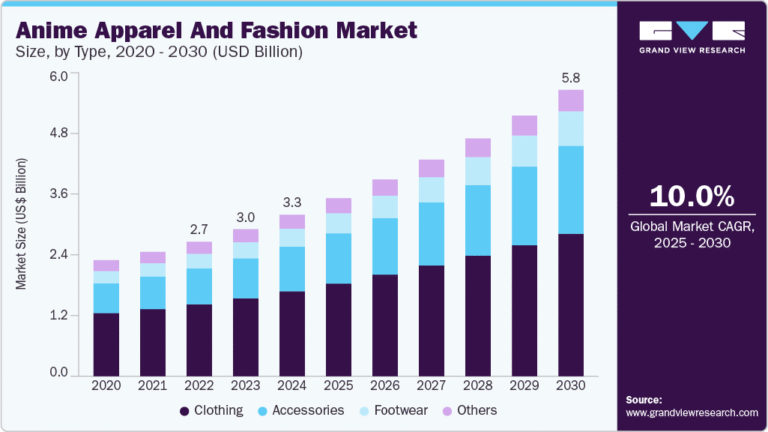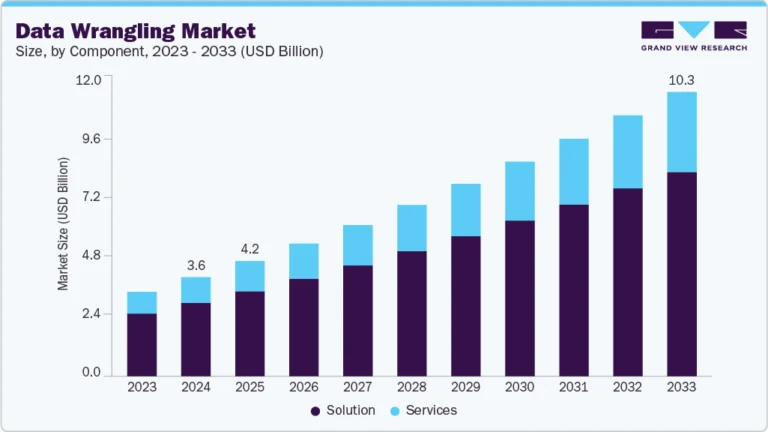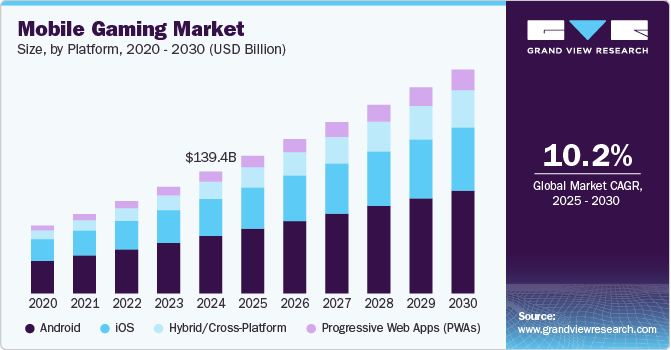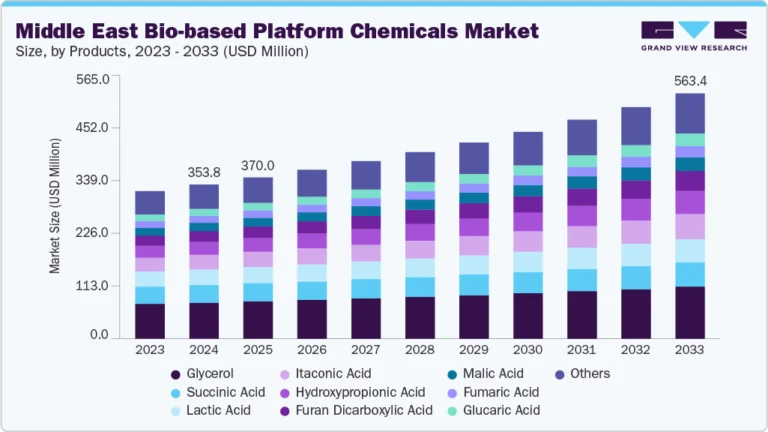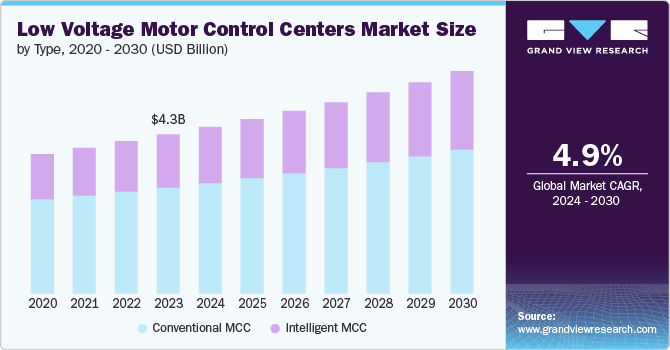B2C E-commerce Market Size, Share & Trends Analysis growing at a CAGR of 19.1% from 2024 to 2030
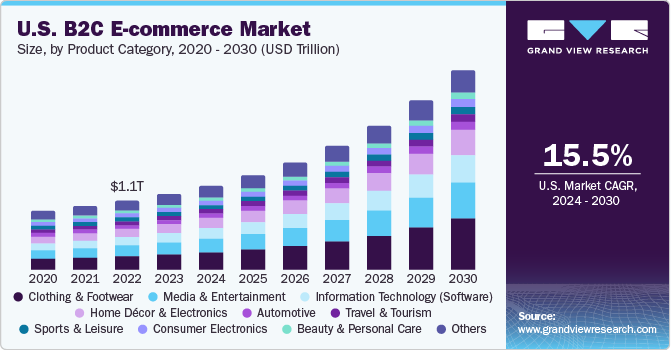
The global B2C e-commerce market size was estimated at USD 5.47 trillion in 2023 and is anticipated to reach USD 17.77 trillion by 2030, growing at a CAGR of 19.1% from 2024 to 2030. The widespread availability of high-speed internet and the proliferation of smartphone use have made internet access widely available.
Key Market Trends & Insights
- The B2C E-commerce market in Asia Pacific dominated the revenue in and accounted for around 58% share 2023.
- The B2C E-commerce market in the U.S. is growing significantly at a CAGR of 15.5% from 2024 to 2030.
- By product category, the clothing & footwear segment accounted for the largest revenue market share of 21.1% in 2023.
Market Size & Forecast
- 2023 Market Size: USD 5.47 Trillion
- 2030 Projected Market Size: USD 17.77 Trillion
- CAGR (2024-2030): 19.1%
- Asia Pacific: Largest market in 2023
Request a free sample copy or view report summary: https://www.grandviewresearch.com/industry-analysis/b2c-e-commerce-market/request/rs1
This allows customers to explore and purchase from anywhere, anytime, boosting online shopping activities. Mobile applications have become a key business-to-consumer (B2C) e-commerce platform, offering a convenient and mobile shopping experience. Integrating social media with e-commerce has significantly fueled the growth of B2C e-commerce sector. Social media is a communication tool and platform for product discovery and shopping. Influencer culture significantly promotes market growth, where individuals with large online followings endorse products, influencing consumer buying choices.
As technology advances, integrating artificial intelligence (AI), machine learning (ML), augmented reality (AR), and virtual reality (VR) into B2C e-commerce platforms has enriched the shopping experience. These technologies offer interactive visualizations of products, virtual try-ons, and personalized recommendations, enabling businesses to stand out and draw in customers. The globalization of markets has opened new avenues for companies to extend their operations beyond their home countries, explore international markets, and serve a diversified consumer base, thus driving the market’s growth. In the highly competitive business-to-consumer (B2C) e-commerce industry, companies are driven to innovate and distinguish themselves by offering unique value propositions, inventive products, customer-centric strategies, and enhanced shopping experiences.
The deployment of 5G technology empowers companies to offer enriched multimedia content, fully immersive experiences, and instant interactions, enhancing the overall online shopping experience for B2C e-commerce customers. The widespread availability of high-speed internet and mobile devices like smartphones and tablets, along with secure online payment methods, has fostered an environment conducive to the growth of this sector. These technological advancements enable companies to engage with a broader audience, streamline online transactions, and increase revenue. In addition, incorporating voice commerce into B2C e-commerce platforms facilitates effortless voice-activated shopping, personalized suggestions, and precisely targeted promotions, significantly boosting customer engagement and loyalty in the projected growth period of the market.
Market Concentration & Characteristics
The B2C e-commerce market growth stage is high, and the pace of the market growth is accelerating. The B2C (business-to-consumer) e-commerce landscape is highly competitive, with global e-commerce powerhouses, specialized platforms, and traditional retailers vying for a market share and consumers’ attention. This sector has grown and expanded, driven by increased internet connectivity, smartphone adoption, and worldwide digital literacy. B2C e-commerce enjoys substantial penetration in regions like North America, Europe, and Asia-Pacific, where many consumers frequently make online purchases. Robust infrastructures, dependable digital payment systems, and widespread internet coverage support the market’s growth. The expansion of e-commerce platforms, marketplaces, and online stores, offering diverse products, competitive prices, and added-value services, has propelled market penetration, attracting a broad customer base.

